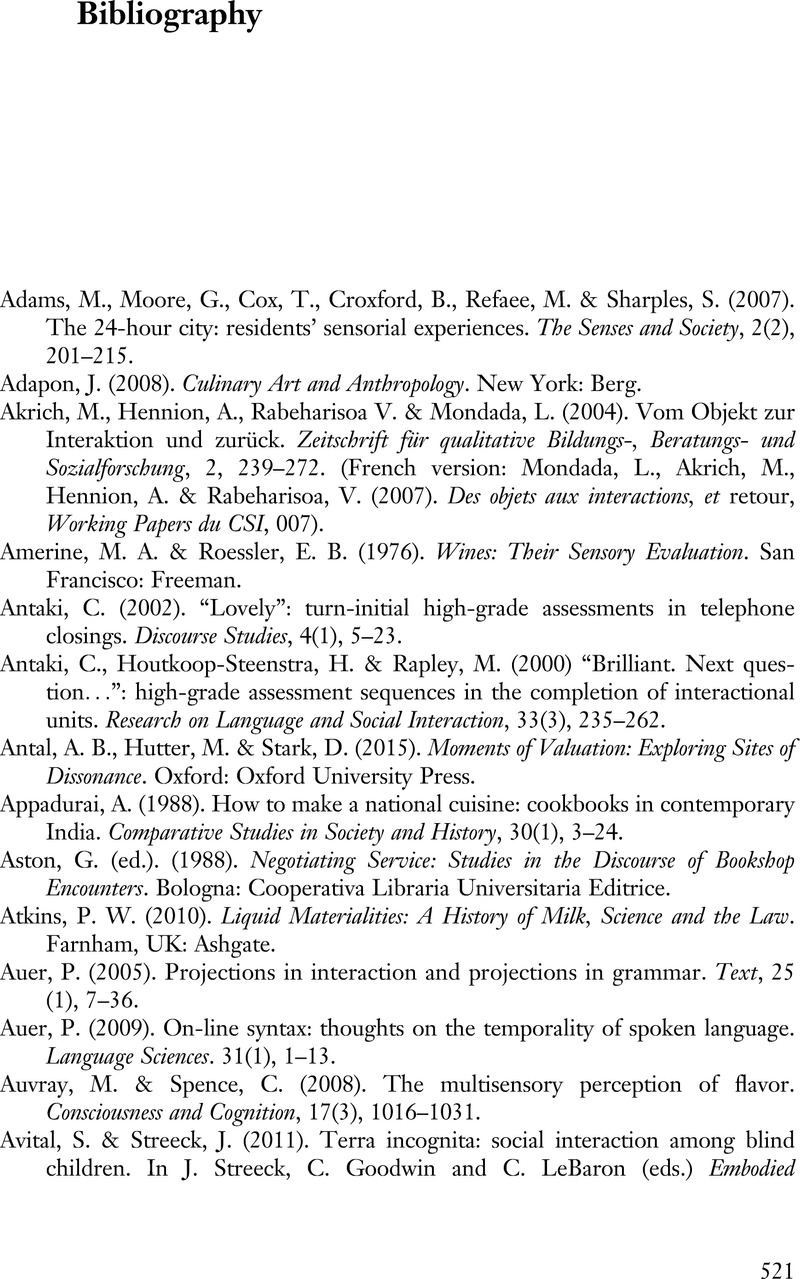Book contents
- Sensing in Social Interaction
- Learning in Doing: Social, Cognitive, and Computational Perspectives
- Sensing in Social Interaction
- Copyright page
- Contents
- Figures
- Tables
- Extracts
- Acknowledgments
- Part I Sensoriality in Interaction
- Part II Looking and Knowing
- Part III Sensing Together
- Part IV Tasting, Assessing, and Making Decisions
- Appendix: Transcription Conventions
- Bibliography
- Index
- Series page
- References
Bibliography
Published online by Cambridge University Press: 21 October 2021
- Sensing in Social Interaction
- Learning in Doing: Social, Cognitive, and Computational Perspectives
- Sensing in Social Interaction
- Copyright page
- Contents
- Figures
- Tables
- Extracts
- Acknowledgments
- Part I Sensoriality in Interaction
- Part II Looking and Knowing
- Part III Sensing Together
- Part IV Tasting, Assessing, and Making Decisions
- Appendix: Transcription Conventions
- Bibliography
- Index
- Series page
- References
Summary

- Type
- Chapter
- Information
- Sensing in Social InteractionThe Taste for Cheese in Gourmet Shops, pp. 521 - 552Publisher: Cambridge University PressPrint publication year: 2021



